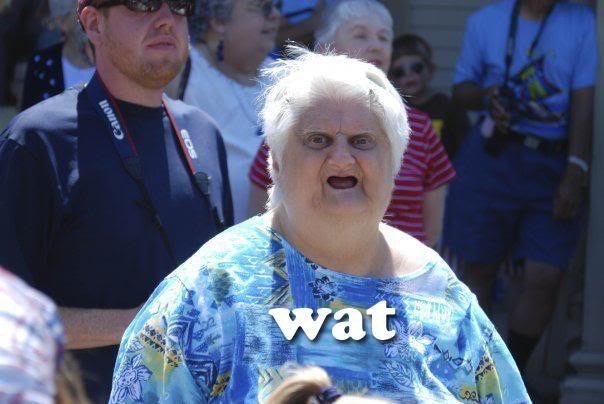Composite function: help needed
On a recent quiz, I was given the question: If
Find a+b.
This first part is not necessary to be read, but it helps for sure. Skip to the if you don't want to read this first half.
Seem simple enough? Let's expand
Let's match the coefficients of
Now assume for now, match the coefficients of
Yay, it's pretty, therefore
Nope
Match the coefficients of we get
Wat.
Now here, you might ask, "well what if a=-2" and I will respond, "Glad you asked, but don't worry, I did the calculations and it still doesn't work, I'm just a lazy sloth who is too lazy to type it out." :P

Contradiction? No solution? Empty set?
But wait, let's try another approach, because the question doesn't ask for a and b, it just asks for . For all we know, . Also, there are many problems which ask for a+b where you can't solve for a and b.
Here's an example:
A right triangle with one leg 6, hypotenuse a, and other leg b, find
Clearly we can't solve for a and b, but we do know that by Pythagorean theorem,
Notice what we did in the original equation, we assumed that and there is no solution for b. Well, what if a=Charizard???
Now my approach ( I did method (I) on the 40 min quiz which took me about 25 mins to figure out, I still finished the other 5 or 6 questions in time though) was to plug in which im not sure if this is valid. By doing this, .
Now, we proceed with 3 sub-solutions from here.
Set
------
Skip to the "skip here" because I think the next two are false
. My friend did this and I think its wrong.
Do the reverse of part 1.
MY OTHER FRIEND DID THIS, PLEASE CHECK IF THIS IS WRONG, I told him it is but he says it's right. ,Plugging in into we get
Setting this equal to the we were given yields
Skip Here
If anyone could provide answers for the following questions I'd greatly appreciate it
What I'm wondering is
1) Why do all the above methods have 1 as a solution? Or is it just a coincidence. Or is it the answer and all others are extraneous.
2) Are the two solutions (2 and 3) false?
3) is this problem unsolvable, false, more than one solution exists, or is it impossible because of some concept like
4) Am I right?
5) this problem is not Alg 2 difficulty (unless all answers are extraneous)
Easy Math Editor
This discussion board is a place to discuss our Daily Challenges and the math and science related to those challenges. Explanations are more than just a solution — they should explain the steps and thinking strategies that you used to obtain the solution. Comments should further the discussion of math and science.
When posting on Brilliant:
*italics*or_italics_**bold**or__bold__paragraph 1
paragraph 2
[example link](https://brilliant.org)> This is a quote# I indented these lines # 4 spaces, and now they show # up as a code block. print "hello world"\(...\)or\[...\]to ensure proper formatting.2 \times 32^{34}a_{i-1}\frac{2}{3}\sqrt{2}\sum_{i=1}^3\sin \theta\boxed{123}Comments
I believe the answer is. "This question is wrong".
There are no corresponding values of a,b which will make the statement true, even if we allow for complex constants.
Log in to reply
The other question that I have is that if I type into wolfram "solve for a and b" the result is false. But if I plug in "find a+b" I get a bunch of ugly results.
Not every equation needs to have a solution. An extreme example could be like f(x)=1+x, find the value of x such that f(f(x))=f(x).
Solving this would give an absurd situation as 1+(1+x)=1+x→2=1?
(II) is clearly wrong.
Log in to reply
Thank you for the clarification
I know that the question didn't specify that a and b are constants, but assume they are.